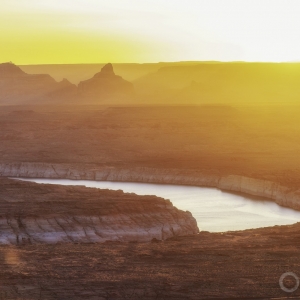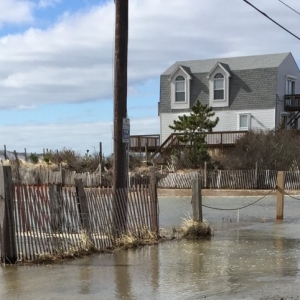Federal Water Tap, August 1: EPA Shows Interest in Fireworks Contamination of Drinking Water Sources
The Rundown
- The EPA will fund research into drinking water contamination following fireworks shows.
- U.S. and Canadian governments assess the state of the Great Lakes.
- The GAO assesses technologies for detecting and treating PFAS chemicals.
- The Senate passes water infrastructure legislation.
- The Bureau of Reclamation releases a draft environmental impact statement for the White Mountain Apache Tribe water system.
- A House committee advances environmental justice legislation.
And lastly, USAID’s administrator highlights food crises in the Horn of Africa.
“If there’s going to be less food potentially produced when a drought hits or when land is flooded, then that means it’s at an even greater premium to ensure that we have cold storage in order to help farmers and other producers store their crops in a manner that dramatically reduces and ultimately eliminates that kind of waste.” — Samantha Power, USAID administrator, during a July 27 press conference at the India Institute of Technology-Delhi. Power’s appearance in India is part of a world tour focusing on food security. She also visited Kenya and Somalia, two countries facing severe hunger crises due to drought, conflict, Russia’s war against Ukraine, and economic upheaval from the pandemic.
In context: War in Ukraine, Drought Converge to Worsen Hunger Crises in Horn of Africa
By the Numbers
93 to 1: Margin by which the Senate passed the Water Resources Development Act. Recently a biennial affair, the bill authorizes Army Corps water infrastructure and ecosystem restoration projects.
$420 Million: Funding for water infrastructure and education improvements included in a compact signed with the government of Timor-Leste. The funds will help construct the country’s first central wastewater treatment plant, drinking water disinfection, and drainage improvements in Dili, the capital of the Southeast Asian country.
News Briefs
EJ For All Act
A House committee advanced legislation that would reduce pollution loads in communities of color and low-income areas.
The Environmental Justice For All Act directs the EPA to consider the cumulative burden of pollution when writing permits for polluting industries.
Tribal Drinking Water System
The Bureau of Reclamation published the draft environmental impact statement for a drinking water supply project for the White Mountain Apache Tribe, in Arizona.
Authorized in 2010, the project includes a dam on the North Fork of the White River, water intake and diversion structures, pumping plant, treatment facility, pipeline, and distribution system. The tribe prefers a project design that allows for irrigation water to be supplied to 3,000 acres of farmland.
The time is ripe for work to begin on the long-delayed project. The Infrastructure Investment and Jobs Act added $2.5 billion to fully fund authorized tribal water systems.
In context: Big Water Pipelines, an Old Pursuit, Still Alluring in Drying West
Studies and Reports
State of the Great Lakes
Levels of toxic chemicals have declined and Lake Ontario is improving, but harmful algae are still a problem.
Those are some of the conclusions from a binational report on the health of the Great Lakes.
Produced by the U.S. and Canadian governments, the report is a snapshot of key environmental indicators, including drinking water, beaches, invasive species, groundwater, nutrient runoff, and fish.
PFAS Treatment Technologies
Policy changes at the federal level could assist with technical challenges for responding to PFAS contamination and exposure, according to a technology assessment by the Government Accountability Office.
The GAO recommended three policy changes: promote research, expand access to analytical samples for easier detection of PFAS not just in water, and support PFAS treatment and destruction technologies.
On the Radar
Fireworks and Drinking Water Contamination
The U.S. Environmental Protection Agency is offering a $2.5 million grant for researchers to investigate water contamination following fireworks shows.
Fireworks contain perchlorate, and when the chemical does not completely combust it can leach into groundwater or enter streams.
It’s not a theoretical concern. Wells supplying Evart, Michigan, were tainted by perchlorate from years of fireworks shows that took place at a nearby fairgrounds.
There are no national drinking water standards for perchlorate. But California and Massachusetts have their own regulations.
One grant will be awarded and applications are due September 14, 2022.
Federal Water Tap is a weekly digest spotting trends in U.S. government water policy. To get more water news, follow Circle of Blue on Twitter and sign up for our newsletter.
Brett writes about agriculture, energy, infrastructure, and the politics and economics of water in the United States. He also writes the Federal Water Tap, Circle of Blue’s weekly digest of U.S. government water news. He is the winner of two Society of Environmental Journalists reporting awards, one of the top honors in American environmental journalism: first place for explanatory reporting for a series on septic system pollution in the United States(2016) and third place for beat reporting in a small market (2014). He received the Sierra Club’s Distinguished Service Award in 2018. Brett lives in Seattle, where he hikes the mountains and bakes pies. Contact Brett Walton






Leave a Reply
Want to join the discussion?Feel free to contribute!